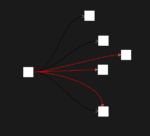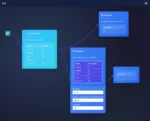
by tyler garrett | May 20, 2025 | Data Processing
In today’s interconnected business landscape, data drives decisions, powers innovation, and inspires new opportunities. Effective data integration is crucial to ensuring processes run smoothly and insights stay relevant. Yet, even with robust frameworks and advanced database management, the question of data consistency and concurrency control inevitably arises. Optimistic and pessimistic locking represent the strategic fork in the road when managing concurrent data access—a choice that can significantly influence the success of data integration and reliability. Navigating these locking mechanisms can ensure your data infrastructure remains performant, reliable, and scalable, enabling insightful analytics and data-driven decision making. Let’s dive into the nuanced world of locking strategies and better understand when, why, and how to implement each approach for ultimate data integration success.
Understanding Optimistic Locking: Flexibility and Scalability
Optimistic locking operates with fundamental optimism, assuming conflicts between concurrent users are minimal. Rather than locking data resources preemptively, optimistic locking allows multiple users or processes free access to data and performs validations at commit time to check for conflicts. This approach inherently promotes flexibility and scalability. When conflicts do occur, optimistic locking detects them and handles exceptions, which can trigger retries or custom conflict resolution strategies.
This method suits scenarios where concurrent conflicts are infrequent, such as analytics reporting or read-heavy integration scenarios. An example use case could be platforms utilizing real-time presence indicators to improve apps, as described in our recent blog post on real-time presence indicators. Optimistic locking facilitates robust performance and resource management under such circumstances, enabling smoother user experiences and system responsiveness.
However, optimistic locking necessitates intelligent conflict management and retry mechanisms. Without careful handling, users can experience transaction failures and customer dissatisfaction due to unforeseen data integrity issues. To implement optimistic locking effectively, actively addressing conflicts through structured exception handling and well-defined retry logic becomes crucial—especially when scaling out data-intensive systems and Data Warehouse solutions like those illustrated in our data warehousing consulting services in Austin, Texas.
Diving into Pessimistic Locking: Ensuring Consistency at the Source
Pessimistic locking adopts a preventative approach—it presumes frequent access conflicts and proactively locks resources before permitting alterations. Once a data record is locked, other concurrent processes must wait until the lock holder completes the transaction, meaning it’s built around protecting structural or transactional consistency from the outset.
This approach is most suitable for data environments featuring concurrent write-heavy operations where accuracy must never be compromised, such as financial transaction processing, real-time inventory management, or critical business transactions. Pessimistic locking helps prevent concurrent modifications from introducing anomalies or inconsistencies, maintaining robust transactional integrity. Coupled with proactive data quality testing frameworks, pessimistic locking provides strong guarantees against accidental data abnormalities.
Yet, the trade-off for enhancing data accuracy and precision is rigidity. Long waits, lock escalation, or deadlocks may occur in systems with numerous concurrent transactions. This highlights the necessity to carefully manage transaction boundaries, locking scope, and timely data releases to prevent bottlenecks or decreased throughput. Proper implementation typically involves careful analysis, specialized optimization, and deep understanding concerning the business-critical nature of your data transactions.
Critical Differences Between Optimistic and Pessimistic Locking
Understanding the critical differences between these two locking paradigms clarifies when to leverage each approach. Optimistic locking thrives in environments where transaction collisions rarely occur, supporting higher concurrency and improved user experiences through reduced contention. Pessimistic locking conversely excels where database resources undergo considerable modification under numerous concurrent processes, offering reliable safeguards against conflicting writes.
The primary distinction hinges on their approach to concurrency: Optimistic concedes concurrent usage while resolving issues post-action, whereas pessimistic aims to proactively manage and minimize concurrent access to the same data resource. Additionally, implementation complexity varies—optimistic locking typically depends on version or timestamp checks, while pessimistic locking leverages database-level transaction controls and explicit lock mechanisms, such as database-specific table or row locks.
Decision-makers must evaluate transactional patterns, data sensitivity, and anticipated usage scenarios when choosing the appropriate strategy. Drawing from our expertise in advanced machine learning-enhanced analytics, your choice between optimistic and pessimistic locking can directly impact data readiness for more sophisticated analytics pipelines and data observability practices.
When to Use Optimistic Locking in Data Integration Workflows
Optimistic locking should generally be employed in processes where read-intensive operations greatly outnumber writes. For instance, large-scale analytical queries, reporting dashboards, and insightful business intelligence processes typically see infrequent concurrent updates. Leveraging optimistic locking in these scenarios helps preserve system responsiveness and reduces operational overhead.
In batch-oriented data integration processes or distributed analytics-driven workflows, conflicts arise infrequently—even in environments utilizing powerful database engines or data lakes. These use cases lend themselves well to optimistic locking, particularly when complemented by data consistency schemes and well-defined data observability strategies capable of quickly surfacing and resolving potential conflicts.
The flexibility and scalability of optimistic locking align effectively with scenarios such as analytics-driven public service enhancements—a particularly relevant topic explored thoroughly in our blog, The Role of Data Analytics in Improving the Delivery of Public Services in Austin. Thus, it’s essential to deeply understand operational patterns and carefully balance performance with acceptable risk levels when employing optimistic locking.
Ideal Scenarios for Implementing Pessimistic Locking
Pessimistic locking should be considered in scenarios where transactional integrity is paramount, especially during rapidly changing or highly sensitive datasets. Finance and banking operations, inventory systems handling sales and returns, or healthcare management applications all represent instances where pessimistic locking keeps mission-critical processes secure and consistent.
Database transactions in these crucial contexts require immediate conflict management to preserve strict accuracy constraints and maintain business credibility. Pessimistic locking simplifies workflow complexity by inherently preventing overlapping modifications, making it preferred where error-tolerance thresholds are low and data integrity requirements are stringent. Its usage is also advantageous in platforms or services involving sensitive and actively updated personal data or regulatory compliance requirements.
Additionally, implementing pessimistic locking complements environments where specialized database tools, such as those used for cloud services management—as exemplified in our MongoDB guide on MongoDB Atlas signup—are optimized and transaction-aware systems supported by robust locking features. Embracing pessimistic locking in these environments ensures maximum trust in transactional consistency. However, caution should always remain toward proper lock management to avoid unintended system deadlocks or excessive waits.
Integrating Locking Techniques Within Your Data Strategy
As your organization implements advanced data strategies, seamlessly integrating locking techniques that align with your data and business needs is essential. Smart combinations, hybrid implementations, and strategic adjustments determined through data monitoring insights provide tremendous efficiency gains. The use of advanced monitoring and analytics tools seamlessly aligns with the meaningful representation of data outcomes, as discussed in our insights into using appropriate scales and axes to accurately represent your data.
Dynamic and strategic approaches—optimistic, pessimistic, or even hybrid—need deliberate attention during your data infrastructure and integration strategy planning. By linking locking methodologies directly with organizational goals, strategic application performance demands, and advanced analytics needs, your team becomes equipped to adapt effectively to ever-changing data environments.
Partnering with trusted technical experts and data strategists can further enhance your locking implementations, effectively minimizing integration and concurrency-related issues. Considering collaboration with respected consultants and specialists, such as our team at Dev3lop, ensures streamlined integration and optimal application performance tailored to your unique operational realities and analytics ambitions.
Conclusion: Strategic Locking Decisions Drive Integration Success
The decision between optimistic and pessimistic locking strategies ultimately relies upon a comprehensive understanding of your data environment, concurrent usage patterns, and organizational priorities. By thoughtfully analyzing use cases, implementation requirements, and operational expectations, organizations more readily achieve performance and scalability optimization while preserving data consistency.
Successful implementation of a locking strategy empowers effective integration, facilitates reliability and accuracy, and unlocks data’s full potential to drive insightful decisions in increasingly complex and data-driven organizational processes.

by tyler garrett | May 20, 2025 | Data Processing
In the data-driven world we operate in today, robust and efficient pipeline orchestration is not just a technical luxury—it’s a vital cornerstone of operational excellence. Organizations accumulating massive datasets require intelligent workflows to capture, process, analyze, and harness insights effectively. Selecting the right pipeline orchestration tool can have transformative effects—enabling real-time fraud detection through mechanisms like webhooks, ensuring data quality with sophisticated metric drift detection approaches, and accelerating actionable analytics, much like harnessing data pipeline integrations between different technologies. To clarify this crucial decision, we will comprehensively compare three leading orchestration platforms: Airflow, Prefect, and Dagster. By understanding their unique strengths and weaknesses, you’ll position your organization at the forefront of data analytics and innovation.
Understanding Pipeline Orchestration and Its Importance
Pipeline orchestration consists of coordinating complex, multi-step data workflows, ensuring their timely and accurate execution. Tasks like data extraction, transformation, loading (ETL), and data science model training rely heavily on orchestrated workflows. Without a structured approach to pipeline management, organizations risk inaccurate analytics, delayed insights, or reduced effectiveness in innovation initiatives.
Effective orchestration ensures data quality, minimizes errors, and accelerates the turnaround time required to process business-critical data. As described in our recent guide on selecting the right ETL tools for business, functional orchestration directly impacts business agility, revenue generation through personalized strategies detailed in our article on personalization, and operational stability.
Each orchestrator—Airflow, Prefect, and Dagster—brings unique capabilities to the table. Understanding these differences helps strategic and technical decision-makers invest attention and resources correctly, maximizing data reliability and business insights to drive growth and innovation.
Apache Airflow: Proven Reliability in the Data Engineering Space
Apache Airflow is widely considered the de facto standard for pipeline orchestration. Launched by Airbnb in 2014 and currently supported by Apache Software Foundation, Airflow enjoys a vast open-source community and industry-wide adoption.
Strengths of Airflow
One of Airflow’s core advantages lies in its robust ecosystem and extensive community support. It provides numerous integrations, enabling seamless connectivity with databases, analytics tools, and cloud platforms. Its user interface and comprehensive metrics help teams easily monitor and debug complex workflows. For businesses continually seeking robust database-driven analytical insights, such as those frequently needed from MySQL consulting services, Airflow’s mature ecosystem is a powerful asset.
Additionally, with its Python-based workflow definition, Airflow offers high flexibility and customization. Data professionals with Python skills can readily create sophisticated workflows with minimal friction. That makes Airflow particularly attractive in large-scale enterprise infrastructures, enabling precise control over intricate dependencies across multiple data pipelines.
Limitations of Airflow
However, Airflow is not without downsides. Its scheduler design may pose scaling difficulties in massive production environments with thousands of tasks. Complex workflows can become cumbersome, increasing maintenance overhead. Organizations seeking state-of-the-art, event-driven workflows could find Airflow’s polling-based mechanism less suited to ultra-low latency use cases.
Prefect: Modern Orchestration Built for Real-time and Dynamic Environments
Emerging as an agile competitor in the pipeline orchestration space, Prefect adopts modern cloud-native architectures and addresses some limitations traditionally associated with Airflow. Prefect posits orchestration differently; it embraces the real-time, event-driven execution model ideally suited for today’s fast-paced analytics landscape.
Strengths of Prefect
Prefect’s most defining advantage is its focus on dynamic workflows and robust real-time capabilities. This makes it highly suitable for businesses relying on sophisticated analytics processes like automated data analysis operations demanding lower latency. Prefect’s workflows handle situational complexity more naturally, reducing overhead in managing dynamic conditions encountered during pipeline execution.
Another advantage Prefect offers is its rich observability and user-friendly monitoring and alerting. Streamlined logging, detailed task status insights, and cloud-ready orchestration allow data professionals and decision-makers quick identification and scalable resolution of operational issues.
Limitations of Prefect
Despite its modern capabilities, Prefect is relatively new—it hasn’t yet developed the extensive user base, comprehensive library integrations, and vast ecosystem Airflow possesses. Organizations desiring exhaustive platform integrations and established community practices might opt for a more mature tool over Prefect’s cutting-edge functionality. Additionally, the rapid pace of Prefect’s development may require frequent updates, potentially introducing operational overhead to engineering teams looking for stability.
Dagster: Emphasis on Data Quality and Developer Experience
Dagster distinguishes itself by uniquely focusing on an exceptional developer experience, data quality management, and overall workflow stability. Compared to Airflow and Prefect, Dagster deliberately emphasizes data validation features, documentation generation, and metadata tracking, implemented via its built-in asset management system.
Strengths of Dagster
A significant strength of Dagster is its superior focus on data quality. The platform’s deep metadata integration simplifies observing and tracking pipeline performance, ensuring data health visibility. This quality focus complements practices such as dimensional modeling, which rely on consistent and reliable data pipelines.
Dagster’s documentation tools, rich pipeline visualization, and modular design simplify workflow creation, debugging, and deployment. Engineering teams appreciate Dagster’s approachable workflow definitions and elegant data asset architecture, significantly accelerating development phases and reducing complexity over time.
Limitations of Dagster
Dagster’s relatively smaller ecosystem and lower maturity compared to Airflow might be limiting for some deployments. Organizations accustomed to Airflow’s broad ecosystem might find Dagster restrictive at first. Similarly, Dagster currently lacks certain out-of-the-box integrations that larger-scale enterprises might require. Companies relying heavily upon specific business intelligence tools such as Tableau data analysis and visualization should carefully examine the available integrations to determine compatibility.
Making the Right Choice: Criteria to Consider
Selecting a pipeline orchestration tool demands an honest assessment of your existing infrastructure, available developer resources, workflow complexity, and operational readiness. For stable, Python-driven, and community-supported scenarios, Apache Airflow continues to be a solid choice. Newer, agile companies seeking real-time analytics and dynamic flexibility could significantly benefit from Prefect’s intuitive architecture. Organizations prioritizing actionable data quality observability will likely find Dagster’s detailed asset management and metadata capabilities extremely beneficial.
Evaluate long-term needs as well—will your team expand into robust data warehousing? Will initiatives around incremental personalization or customer segmentation rely heavily on stable, secure pipelines? Careful consideration of these future scenarios, such as leveraging ETL infrastructures or specialized model training suitable for modern analytic workloads represented by innovations like Canopy, helps ensure today’s orchestration decision aligns with your strategic roadmap.
Conclusion: Aligning Orchestration With Strategic Goals
No single orchestration engine universally suits every organizational scenario. Airflow, Prefect, and Dagster each have distinct strengths shaped by underlying architectural philosophies, user communities, and integration ecosystems. Choosing wisely involves aligning technical capabilities with broader strategic imperatives, always viewing orchestration not merely as a technical choice but as a critical part of your organization’s innovative DNA.
At Dev3lop, we help businesses unlock maximum value from their data infrastructures and ensure they strategically select and implement pipeline orchestration solutions. Remember, pipeline orchestration isn’t just about managing workflows—it’s about ensuring data reliability, powering personalized customer experiences, and ultimately, growing your business.

by tyler garrett | May 20, 2025 | Data Processing
In today’s rapidly evolving data landscape, even the most robust data processing pipelines occasionally encounter failures. Missing or lost data can pose a significant threat to operational efficiency, strategic analytics, and ultimately, competitive advantage. Implementing a Dead Letter Queue (DLQ) represents a fundamental yet powerful strategy for handling such inevitable errors gracefully. This not only safeguards valuable information but also enhances the reliability of your analytics processes, empowering you to turn previously frustrating data failures into strategic opportunities. Whether you’re managing real-time stream processing or complex batch workflows, a properly structured DLQ implementation can drastically improve your data resilience and analytics outcomes. Let’s delve into the essentials of DLQs, their application, and how your organization can harness their power to unlock improved analytics performance and innovation-driven growth.
What is a Dead Letter Queue and Why It Matters
A Dead Letter Queue is essentially a specialized storage mechanism that captures messages or data payloads that fail to process correctly within your data workflows. Think of it as the analytics pipeline’s safety net, where troublesome or malformed data points end up rather than simply disappearing or causing system disruptions. With today’s analytics-driven organizations processing massive volumes of data, ensuring the integrity and completeness of this data is not only mission-critical—it is central to maintaining trusted analytical insights and decisions.
DLQs matter because they bridge the gap between flawless data streams and the inevitable errors of real-world data processes. By implementing an effective DLQ, organizations can isolate problematic data, diagnose underlying problems efficiently, and thereby significantly minimize downtime and improve overall operational efficiency. Not only does this strengthen internal process reliability, it further amplifies the value of your investment in advanced analytics capabilities.
Without a DLQ, organizations risk losing crucial data or generating misleading analytical outcomes. On the contrary, leveraging DLQs supports a more robust data foundation—a principle that successful businesses increasingly rely upon. As data strategists often highlight, good data-driven decision-making starts with quality data management practices. For further context, explore our insights on uncovering hidden opportunities through data analytics to gain perspective on why stringent data processing practices truly matter to sustained business growth.
Identifying When and How to Implement Dead Letter Queues
Implementing a Dead Letter Queue should become a priority the moment your organization recognizes recurring errors within your existing data pipelines. Indicators can include intermittent processing breakdowns, data discrepancies, or unanticipated metadata changes. Often, entities with high-throughput data streams ranging from event-driven architectures to automated analytics ingestion pipelines find DLQs critically important, especially when data sources or processing frameworks frequently encounter inconsistent schemas or external interruptions.
Successful implementation hinges on several factors. Initially, it’s essential to thoroughly audit existing data workflows to clearly pinpoint your pipeline’s failure points and ensure visibility of missed messages. Next, define appropriate criteria or business rules for classifying and identifying failed data. Establishing clear thresholds and strategies for retry mechanisms avoids overwhelming your DLQ and ensures that failed data is isolated according to precise business logic. Also, consider the scalability of your queueing resources—DLQs should operate without bottlenecks, supporting proportional growth in data volume and complexity over time.
As you’re laying out your dead letter handling processes, aim to make them accessible for ongoing analytics and monitoring. Maintain clear visibility to the DLQ’s status, enabling data scientists and analytics teams to assess impacts, troubleshoot issues, and leverage this insight toward continuously improving overall analytics accuracy. Need a deeper discussion on implementing advanced analytics frameworks? Check out our advanced analytics consulting services for expert assistance tailored specifically to your team’s analytical objectives and infrastructure.
Choosing the Right Architecture for Your Dead Letter Queue
A correctly structured DLQ greatly depends on your current technology-stack, processing methodologies, and analytics demands. Organizations using cloud-intensive data analytics might prefer dedicated managed DLQ services integrated seamlessly within cloud providers, such as AWS SQS or Google Pub/Sub. Alternatively, your infrastructure may call for an open-source solution that allows greater flexibility and control, such as Apache Kafka Dead Letter topics or RabbitMQ.
The architecture choice should align directly with your organizational context—considering data scale, message durability, the strengths of current team skills, and pre-existing data pipelines. For example, those handling smaller batch processes requiring straightforward implementable solutions may choose simpler tools, while organizations running large-scale real-time analytics streams could require sophisticated architectures with integrated failure analytics.
Also, factor in compatibility with current environments, frameworks, and analytics tools. Integrating a DLQ effectively necessitates a careful approach aiming to minimize disruptions or overhead. Teams utilizing Node.js might find value in our detailed guide: how to send XML data to Google BigQuery using Node.js, demonstrating a significant practical experience that aligns with effective DLQ implementations as part of different technology stacks.
Ultimately, choosing the correct DLQ architecture is about striking an optimal balance between reliability, ease of use, compatibility, scalability, and cost efficiency. The wrong architecture choice could compromise your analytics capabilities, induce undue complexity, or incur unnecessary performance overhead—so investing time and resources into making informed decisions can pay huge dividends in improving analytics resilience.
Best Practices for Managing and Monitoring Dead Letter Queues
To fully realize the value of DLQs, robust management and proactive monitoring are crucial. Regular monitoring should include metrics such as DLQ depth, entry frequency, or processing latency. Real-time alerts addressing unusual activity, spikes in rejected messages, or unexpected growth of queue volumes should also be built to maintain proactive control and resolution.
An essential best practice is to routinely perform detailed analytics and diagnostic studies on the data ending up in the DLQ. This practice clarifies root causes, systemic issues, and enables continuous improvement of data architectures and processes. By implementing sound logging practices and embedding searchable metadata with clear indicators of problematic data, analytics and engineering teams significantly boost productivity and troubleshooting efficiency.
Furthermore, DLQ management implies thoughtfully designed retry mechanisms integrated with fallback handling or escalating prioritization systems. Understanding when and how often to reprocess dead-lettered messages is critical in balancing process effectiveness, analytics reliability, and resource availability.
At Dev3lop, we have gathered considerable experience helping businesses adopt robust analytics management practices. For detailed guidance on finding your footing in the rapidly changing data landscape, consider visiting our article on how to break into the data industry effectively. Embracing DLQ best practices not only safeguards your data but also positions your analytics team to deliver consistently precise and insightful results.
Using Insights from Your Dead Letter Queue to Improve Your Data Visualization and Analytics Strategy
Beyond their primary usage—error notification and message buffering—dead-letter queues offer strategic advantages by acting as an analytical goldmine. Recognizing patterns of data failure and aligning these insights to analytics visualization practices can drastically enhance reliability, credibility, and strategic comprehension across your analytical processes.
Integrating DLQ insights into analytics strategy means diagnosing frequent discrepancies or misunderstanding in data processing logics and metrics early on. As you refine analytics processes and evolve towards optimized data visualizations, integrating these insights becomes indispensable. Drawing correlations between dead-letter analytics and front-end data visualization inaccuracies will provide timely diagnostics, enhancing both prevention and proactive analytics governance.
Clear and effective visual analytics serve as the cornerstone of strategic decision-making proficiency. To deepen your capabilities leveraging visualization and communicating these complex insights effectively, consider referencing our article: guide to creating visually appealing data visualizations.
Ultimately, data strategists consider every data artifact—successful or unsuccessful—as providing immense value for optimizing insights and outcomes. Leveraging Dead Letter Queues strategically allows you to harness previously unexplored opportunities, fueling innovation and analytical excellence across your organization.
Conclusion
Implementing Dead Letter Queues exemplifies strategic foresight in data processing and analytics management—shifting data failures from disruptive nuisances to insightful opportunities. By selecting fitting architectures, embedding rigorous monitoring processes, and linking analytic insights proactively, organizations continuously fortify their data reliability. Explore some deeper strategic insights like our perspective on why stream processing matters over traditional batch models for greater clarity within the evolving data industry.
Need to accelerate your analytics transformation journey? Connect with experts dedicated to your analytics success.

by tyler garrett | May 20, 2025 | Data Processing
Data has become the cornerstone of modern organizations, illuminating crucial insights and accelerating decision-making. As data ecosystems evolve rapidly, businesses reliant on batch processing pipelines are now turning their gaze towards real-time processing solutions. This shift isn’t merely a technological upgrade; it’s a strategic move that positions organizations to respond ahead of the competition, seize emerging opportunities, and deliver extraordinary value through instant data-driven responses. For today’s digital-first, customer-centric enterprises, migrating from batch to stream processing isn’t optional—it’s essential. In this blog, we guide you through the migration path in a comprehensive, practical manner to ensure you leverage streaming analytics effectively to transform business intelligence into actionable strategies and engage stakeholders with dynamic, impactful data visualizations.
Understanding the Shift: Batch Processing vs. Stream Processing
To clearly map your journey from batch processing to stream processing, it’s imperative to understand the fundamental differences. Batch processing involves the accumulation of data to certain volumes or a set period of time before processing all at once. This approach has historically dominated due to technological constraints and resource limitations. While batch processing is sufficient for specific low-frequency scenarios, it falls short in today’s fast-paced, decision-critical environments where actionable insights must be available instantly.
Conversely, stream processing enables organizations to analyze and respond to data incrementally as soon as events occur instead of waiting for scheduled intervals. It treats the flow of data as a continuous ongoing sequence of events, effectively allowing organizations to act swiftly, adjust business operations in real time, and stay ahead of competitors. These solutions are especially crucial when the timeliness of data directly impacts business decisions, customer success, and market recognition.
For example, a globally distributed retail company needs instantaneous visibility into transactions across many regions. Traditional batch processing may delay actionable insights, negatively impacting customer satisfaction, market adaptability, and revenue generation. On the contrary, stream processing allows the company to generate instantaneous insights and predictive analytics, enhancing stakeholder engagement by illustrating key trends and patterns through real-time storytelling through data visualization.
Assessing Your Current Data Infrastructure and Analytics Needs
Successful migration demands robust preparation and planning. Begin by evaluating your existing data infrastructure comprehensively. Begin with outlining your present batch system, including its workflows, data integration techniques, analytics tools, dashboard platforms, data storage systems, and any dependences or workflows closely intertwined. Assess performance benchmarks, current bottlenecks, data latency issues, and scalability limitations inherent in your existing setup.
Next, consult multiple stakeholders across the organization—not only those handling data operations—bring in operational teams, management, and analytics professionals. Understand their analytics pain points, the value gained from immediate insights, and prioritize use cases where faster insights could profoundly impact decision-making or financial performance. Isolate groups within your organization whose decision-making and workflows are highly dependent on time-dependent insights, such as sales, marketing, customer experience, security, and compliance teams, and focus stream adoption efforts initially within these departments.
Furthermore, your analytics and reporting capabilities must align well with a real-time data processing context. Assess your current dashboard tooling and visualization strategy. Make a conscious effort to transform static reports to real-time dashboards carefully. To grasp comprehensive knowledge of visualization techniques, consider exploring existing resources such as our comprehensive tutorial on creating basic charts and graphs. By concretely assessing your existing data practices, infrastructure, personnel, and future analytics vision, organizations effectively build their migration roadmap.
Selecting Appropriate Technology for Stream Processing Migration
The software landscape has expanded, offering various tools and platforms designed for real-time stream analytics. Successfully selecting the correct technology depends on factors such as data throughput expectation, latency tolerance, scalability, data schema complexity, data integration requirements, DevOps competencies, and ease of operations supported.
Popular frameworks such as Apache Kafka, Apache Flink, Apache Spark Streaming, Google Cloud Dataflow, and Amazon Kinesis represent powerful open-source or cloud-managed options that transfer businesses smoothly into real-time data capabilities. It’s critical to evaluate how these solutions cater specifically to your organization’s unique market context and technology stack before deciding. Consider features such as data replication reliability, ordering guarantees, stream processing capabilities such as windowing or stateful processing, robust analytics libraries, integration ease, and strong developer ecosystem support during decision making. Also, carefully evaluate and benchmark the technology for performance metrics, failover robustness, and data integration flexibility.
For businesses prioritizing cloud-native advantages, managed services are often ideal, handling much of the infrastructure complexity inherent in real-time stream pipelines. For example, organizations leveraging cloud database infrastructure such as MongoDB might consider managed cloud transformation approaches using MongoDB Atlas. Such cloud-based infrastructure helps organizations upscale services effectively while maintaining visibility and flexibility required within high-velocity analytics processes.
Migration Planning: Steps Toward Real-Time Streaming Adoption
Once your goals, platform, and infrastructure are established clearly, proceed with the migration step-by-step, strategically approaching each iteration to mitigate risk. Choosing one pilot use case is often recommended, as you can effectively monitor system performance, reliability, latency, and associated challenges clearly before scaling the entire business processing architecture migration.
Begin by breaking down the existing batch workflows and identifying data sources. Then, translate the batch workflow logic to a streaming counterpart, incorporating critical streaming semantics such as windows, time-based sessions, and event-driven analytics rules. As a best practice, implement explicit event-based messaging or data transportation enhancements to achieve higher dependability and speed of event ingestion. Use techniques around data buffering and appropriately scaled window configurations to optimize data throughput and flow balance for real-time analysis.
Continuous performance monitoring becomes essential throughout the transformation process. Establish comprehensive monitoring frameworks early, track system health, performance, capability metrics, and throughput analysis data points. Constant review of streaming workflow service level objectives (SLOs) allows businesses to detect and mitigate any streaming issue or scalability limitations proactively. Learn more by exploring our focused article about designing reliable and maintainable data pipelines, ensuring the continued efficiency and accuracy of your new data streaming infrastructure.
Optimizing Visualization and Analytics Through Real-Time Streaming
Once the streaming pipelines are successfully implemented, optimizing visual communication becomes key to providing organizational value. Real-time analytics enable dynamic reporting capabilities, transitioning from static representations to continuously refreshed visual dashboards that depict trends, alerts, and KPIs instantly.
Prioritize dashboard responsiveness and clarity, creating visualization that human cognition can quickly interpret in real-time scenarios. Also, ensure dashboards/services chosen during migration are capable of instant data refresh times, interactive functionality for quick exploration capability, scalable real-time integration features, and are built specifically for supporting streaming data.
Performance tuning also plays a key role when integrating streaming data into analytical dashboards and visual reports. Higher frequency updates require optimized backend data pipeline interactions paired with high-performance data visualization tools. Our expertise in performance tuning for data visualization dashboards helps organizations intelligently improve query responsiveness, dashboard rendering speed, and real-time analytics effectiveness—creating a positive end-user experience with impactful insights delivery. Finally, empowering end-users with intuitive visualization platforms like Tableau can enhance further self-serve analytics opportunities within your team while streamlining operations. Organizations exploring these capabilities can use resources like the Tableau Desktop download guide for additional visualization tooling support and onboarding.
Conclusion: Accelerating Towards Real-Time Data Excellence
Converting batch pipelines to real-time data streaming grants organizations a competitive edge in today’s digital ecosystem marked by rapid decision-making and instant responsiveness. A strategic migration plan, robust technology selection, deliberate phased rollout, continuous monitoring, and performance optimization transform data analytics from static reports to instantaneous business agility and enhanced decision-making capabilities.
Real-time stream processing isn’t just a technological necessity—it’s a proactive leap towards innovative business strategy execution. Embracing streaming analytics technologies wisely, alongside effective visualization practices, empowers your business to stay ahead, drive transformative digital strategies, and ensure confidence in your organization’s ability to pivot quickly to market demands. Trust your migration journey to expertise, empowered by the strategic guidance outlined here, to truly harness the power and potential of real-time data streams.

by tyler garrett | May 20, 2025 | Data Processing
In today’s rapidly evolving digital landscape, businesses frequently face the challenge of efficiently moving vast volumes of data through their analytics pipelines. As organizations increasingly leverage cloud-based solutions, real-time processing, and integrate multi-source, multi-format data streams, the sheer volume and complexity of payload data becomes overwhelming without strategic optimization. Payload compression emerges as an essential practice, acting as a multiplier of efficiency that significantly enhances the performance, scalability, and affordability of data-centric workflows. Implementing effective compression strategies not only accelerates data transfers and maximizes resource utilization but also ensures your pipelines maintain reliability and meet service-level agreements even under peak workloads. In this post, we’ll unpack crucial payload compression techniques and best practices, empowering decision-makers to harness the full potential of their data infrastructure.
Why Payload Compression Matters in Data Pipelines
Efficient payload compression is fundamental for businesses seeking to optimize their data movement processes. As systems become more distributed and data travels across hybrid and cloud environments, transferring uncompressed data becomes increasingly costly and inefficient. Large, uncompressed payloads can choke data pipelines, delaying analytics and decision-making processes that rely on timely, accurate information. Given the ever-growing scale and velocity of data-intensive operations, payload compression is a core enabler for infrastructure performance, lower operational costs, and improved overall data agility.
Furthermore, modern businesses looking to enhance their analytics capabilities often encounter “data silos,” isolated pockets of data that hinder insights and decision-making. By compressing payloads strategically, organizations can overcome these silos by facilitating quicker synchronization and integration between disparate systems. For more insights on breaking these barriers, check out our blog: how to spot data silos holding your business back.
Payload compression directly supports initiatives promoting transparent data transformations, improved reliability, and increased resilience in data pipelines—topics explored thoroughly in these posts about explainable computation graphs and designing reliable and maintainable data pipelines. Adequate compression brings measurable benefits such as shorter network transfer durations, reduced storage consumption, faster disaster recovery, and overall cost reduction. Simply put, organizations committed to innovation and effective data utilization cannot afford to overlook payload compression techniques.
Main Payload Compression Techniques and Their Advantages
Lossless Payload Compression Methods
Lossless compression methodologies guarantee data integrity by retaining all original information. Popular lossless algorithms, such as GZIP, DEFLATE, Brotli, and LZ4, have become industry standards. DEFLATE, for instance, offers balanced speed and size reduction, facilitating quick payload transfers and optimizing your infrastructure’s bandwidth usage. Methods based on lossless compression are essential for business-critical scenarios where accuracy and precision cannot be compromised, such as financial data exchange, medical records, or detailed transactional logs.
The reliability and transparency established by employing proven lossless compression methods augment broader efforts towards ensuring quality and transparency throughout the data lifecycle. For an in-depth look into continuous quality integration, visit our insights on ambient data governance for embedded quality control. Conversely, algorithm selection should account for processing overhead—the right decision involves balancing compression ratios with the computational resources required for compressing and decompressing payloads. This assessment will ultimately drive your choice of algorithm, leading to optimal pipeline responsiveness and resource allocation.
Lossy Payload Compression Techniques
Lossy compression exchanges some degree of data fidelity for dramatically improved compression ratios. As a result, higher-level data interpretation can withstand some data loss while achieving faster transit and storage optimization. Media files, IoT sensor streams with high-frequency data collection, and specific big-data analytics workflows are examples where lossy methods may be pragmatic. Optimal use of lossy compression fits neatly within sophisticated strategies that prioritize efficient processing without necessarily preserving complete fidelity.
Before applying lossy methods, organizations must rigorously define tolerance thresholds. Strategically weighing the trade-offs in payload integrity ensures data stakeholders remain confident about analytic conclusions and strategical decisions derived from slightly compressed payloads. These decisions should align with policies regarding acceptable data loss and inform carefully engineered data pipelines. For businesses experiencing complexity or data flow challenges, engage with our team covering data warehousing consulting services to ensure you’re strategically positioned in meeting these requirements.
Payload Compression in Database Systems and Data Warehousing
In data warehousing and relational database environments, payload compression can dramatically impact system performance and operational efficiency. Databases store payload data on disk, in-memory, or in hybrid arrangements, affecting query performance and infrastructure cost due to storage and network demands. Proper compression strategies in database environments yield considerable savings by reducing data footprint, accelerating queries, and optimizing I/O activity. Compression improves efficiency for both database reads and writes while minimizing storage scaling concerns.
Techniques such as table-wide and columnar compression can integrate seamlessly with indexing strategies to enhance retrieval performance. If you’re utilizing SQL databases in your business, explore how targeted optimizations improve retrieval process performance by reading how to effectively create indexes for enhanced SQL data retrieval. Database administrators can combine index creation alongside compressed database views. For creating powerful virtual tables that pre-compress or transform data efficiently, see our step-by-step guide about how to properly create views or virtual tables in SQL.
Advanced Payload Compression Strategies for Real-Time Analytics Pipelines
Real-time analytics pipelines impose stringent latency and performance requirements, amplifying the need for precise payload compression techniques. High compression ratios and efficient processing speeds are crucial for event streams, sensor data, IoT telemetry, operational metrics, and logs flowing through event-driven architectures. Intelligent compression solutions leverage calculated trade-offs between size, latency, and compute power. Techniques such as fragmentation, internal data structure optimization, and intelligent predictive compression lead to superior real-time performance.
Furthermore, real-time synchronization of compressed data requires robust implementation of sophisticated data engineering patterns. For greater insights into achieving seamless data synchronization in real-time scenarios, visit our detailed examination on bidirectional data synchronization patterns. The strategic utilization of payload compression allows infrastructure engineers to reliably address scalability concerns common in modern data engineering, a topic extensively covered in our analysis of scalable data engineering architecture challenges.
By thoroughly evaluating payload compression algorithms and aligning them with the demands of real-time analytics pipelines, organizations can significantly enhance pipeline responsiveness, operational resilience, and overall data processing speeds, directly influencing their ability to align production processes with anticipated demands, as explored extensively within our guide to streamlining production planning strategies.
Implementing an Optimal Payload Compression Strategy
Crafting an optimal payload compression strategy requires holistic insights into your current and anticipated data workflows. Begin by assessing data pipeline requirements, identifying desired performance benchmarks, latency tolerances, payload sizes, and anticipated throughput expectations. Carefully select appropriate compression methods based on individual workflow characteristics, evaluating their effectiveness through comprehensive testing and benchmarking.
Next, integrate compression strategies into a universally enforceable and standardized practice across your entire data infrastructure. Proper training, clear architectural standards, and data governance policies will ensure alignment and consistent results across diverse business functions. Finally, periodically reassess and refine your payload compression strategy, making adjustments as your organization scales, technology evolves, and workloads undergo transformation.
Undertaking these strategic decisions might seem initially challenging, but the long-term rewards are considerable: enhanced efficiency, lower costs, accelerated analytics, and ultimately—superior competitive advantage in today’s data-driven market.

by tyler garrett | May 20, 2025 | Data Processing
Imagine orchestrating your data pipelines with the confidence of a seasoned conductor leading a symphony—each instrument perfectly synchronized, harmonious, and resilient even under unexpected interruptions. In data engineering, idempotency empowers this confidence by enabling pipeline tasks to be retried and safely repeated without adverse side effects. By adopting idempotent processes within your data pipeline strategy, organizations dramatically boost reliability, streamline scalability, and safeguard quality. Whether it’s detecting anomalies, refining data governance, or optimizing SQL queries, incorporating idempotency is crucial for modern data environments designed to ensure trusts like clockwork reliability.
Understanding Idempotency: What it Means in Data Engineering
Idempotency is a fundamental principle implying that performing a given operation multiple times yields the same outcome as performing it exactly once. In data processing workflows, this means you can repeat or retry a task without fear of undesired duplication or inconsistent results. Implementing idempotency ensures your data pipelines are robust against partial system failures, interruptions, or retry logic executions—which are common scenarios in modern computing environments, especially when scaling or integrating distributed systems.
Consider a typical scenario where a large batch of invoices needs processing overnight; network interruptions or server hiccups can lead to incomplete jobs. Without idempotent handling, retries could inadvertently duplicate invoice payments, transactions, or data records. A robust strategy is essential for ensuring that data integrity is maintained even when operations experience instability. For businesses aiming to scale from rudimentary spreadsheet reporting setups to sophisticated systems—such as outlined in our detailed guide about how to transition from Excel to data warehousing—idempotency represents a crucial foundational step.
Smart leaders grasp this importance, realizing that data quality and consistency directly affect overall strategic capabilities. Adopting idempotent practices helps fortify an organization’s data governance for strategic decision-making, underpinning robust mechanisms of quality control through every stage of the pipeline.
Benefits of Implementing Idempotent Processing in Data Pipelines
Enhanced Reliability and Stability
Implementing idempotency significantly improves your pipeline’s reliability, allowing for consistent and predictable outputs irrespective of retries or accidental repetitions. This reliability becomes increasingly critical as an organization scales or integrates numerous data sources and processes. When any given task can safely be repeated with confidence, engineers can mitigate risks associated with data processing interruptions, IT infrastructure updates, or global network instability.
Reliable processing also translates directly into business benefits—saving valuable time and resources previously spent troubleshooting unforeseen data issues. Organizations that embed robust quality control safeguards comprehensively through their pipeline, as discussed in our article on ambient data governance, experience fewer disruptions and maintain higher levels of trust in analytical outputs. Idempotency is the backbone of these proactive measures, offering a robust layer of protection against data loss or corruption, enabling powerful and accurate business intelligence insights.
Simplified Error Handling and Debugging
With idempotent implementation, error handling becomes significantly simpler. Because the system can safely retry processes without negatively impacting data accuracy, engineers can build pipelines robust enough to handle multiple execution attempts seamlessly. This simplifies troubleshooting and debugging, giving teams greater confidence in reliability and increasing their ability to quickly pinpoint the root cause of issues.
Moreover, simplified debugging contributes dramatically toward overall pipeline performance optimization, including techniques discussed in detail within our guide on query mesh optimization. By reducing complexity and ensuring data retrieval tasks remain consistently repeatable, businesses rapidly move from firefighting mode into proactive prevention and performance optimization.
Real-World Idempotency Strategies and Techniques
Leveraging Transactional Database Systems
The cornerstone of idempotency often lies within robust transactional database systems like PostgreSQL. By leveraging ACID-compliant transactional databases, businesses can enforce consistency at the database layer, making retries inherently safe. PostgreSQL, for instance, offers strong transactional integrity and powerful indexing mechanisms that are essential for achieving true idempotency. Many organizations benefit from expert guidance, such as provided by professional PostgreSQL consulting services, to devise sophisticated balanced solutions optimally structured for robust, reliable, and scalable data processing.
Building on transactional database tools also means strategically embedding logical operations, as we explore thoroughly in our article on harnessing logical operators in SQL. Integrating skillful use of AND, OR, NOT operators and applying transaction management features correctly, engineers form sophisticated yet highly reliable idempotent workflows that provide clarity and consistency to your data pipelines.
Deduplication Using Unique Identifiers
Another common approach in idempotency implementation is deduplication through unique identifiers generated during data processing. Assigning unique transaction IDs, batch IDs, or message IDs to processes ensures that repeated actions can be recognized and isolated, eliminating unintended duplication in the final processed data set.
This simple yet elegant solution proficiently prevents repeated outputs and enables precise analytical accuracy. Deduplication is also essential for advanced applications such as using semantic relationships in analytics, as detailed in our piece regarding semantic embeddings in business intelligence. Reliable, deduplicated data forms the foundation required to build intelligent, personalized analytics environments capable of deeper, sophisticated semantic interpretations for strategic analytics and decision making.
Advanced Applications and Idempotency Best Practices
Anomaly Detection and Intelligent Retry Strategies
Idempotent workflows greatly complement advanced analytics tasks, notably in anomaly detection within time-series data. When using novel frameworks like the Hierarchical Temporal Memory algorithm, covered in detail within our guide on HTM for anomaly detection, idempotency ensures that repetitive anomaly recalculations and alert mechanisms remain precisely controllable.
Implementing intelligent retry strategies paired with idempotent processing enables data engineers to trigger complex anomaly recovery tasks safely, rerun outlier detection repeatedly, or adjust parameters iteratively in response to shifting market trends, while maintaining consistent results each time. Ultimately, each retry reliably generates identical outcomes—perfectly structured for analytical trust and informed decision-making.
Optimizing Performance of Complex Data Pipelines
Optimizing pipeline calculations also relies heavily on idempotency to recalculate and refine analytics seamlessly. Whether engineers are undertaking complex analyses using BI tools like Tableau—detailed more specifically in our popular piece on fast Tableau calculations—or making adjustments on complex large-scale pipelines, stable recalculations with idempotency allow rapid iterative optimizations without fear of inconsistency or corrupted results.
Ensuring consistent and performant analytical outputs remains critical in mature, competitive marketplaces. Employing idempotent practices within optimization tasks safeguarding datasets from unintended changes that could impact decision-making processes and degrade trust—undermining valuable data investment. Adopting idempotent workflows across data platforms leads to smoothly-operating, reliable analytical pipelines that remain adaptable in demanding business environments.
Conclusion: Unlocking Reliable Data Pipelines with Idempotency
In today’s rapidly evolving digital landscape—characterized by increasingly complex data ecosystems and diversified analytics requirements—implementing idempotency has become indispensable for pipeline reliability. Idempotent processing strengthens your organization’s foundations, allowing scalable, repeatable, and reliable data workflows. It facilitates enterprise-wide alignment on reliable data quality and empowers strategic analytical outcomes necessary for sustained innovation and growth.
As forward-looking companies actively build robust foundations for analytics excellence, adopting idempotent best practices remains central to their success. Ready your organization by bringing clarity, confidence, and consistency to your data operations—harnessing industry-proven best practices in idempotent workflows to keep business intelligence sharp, data governance robust, and pipeline reliability assured.






























